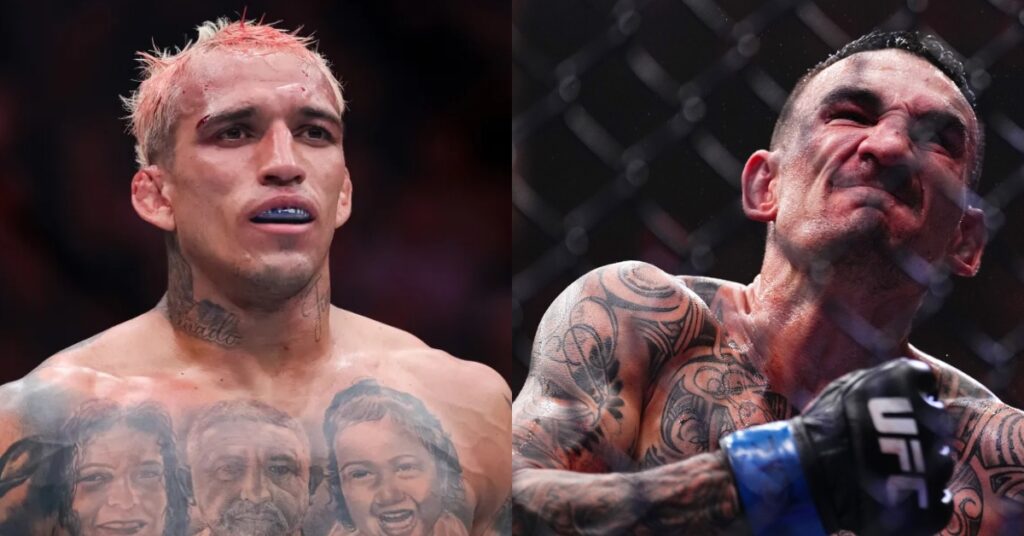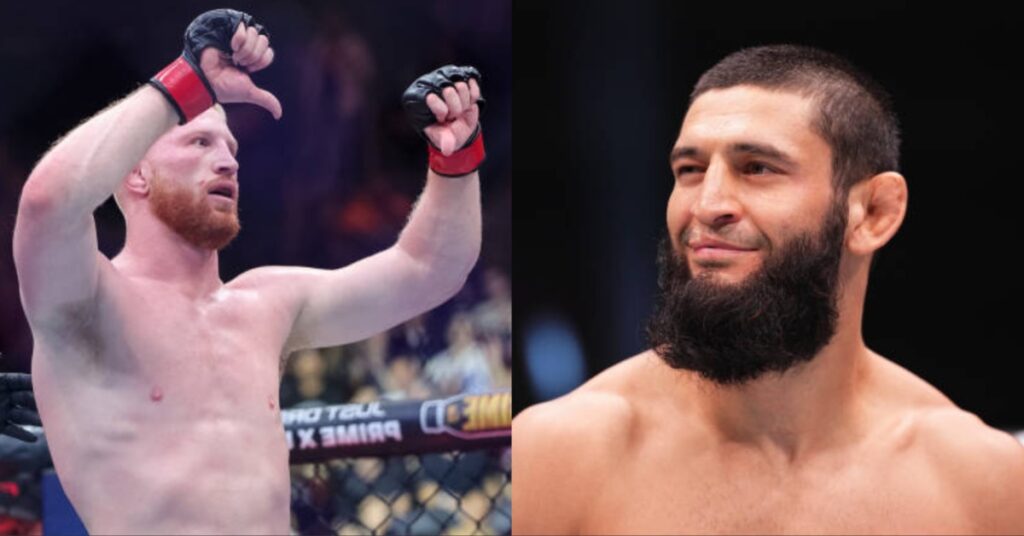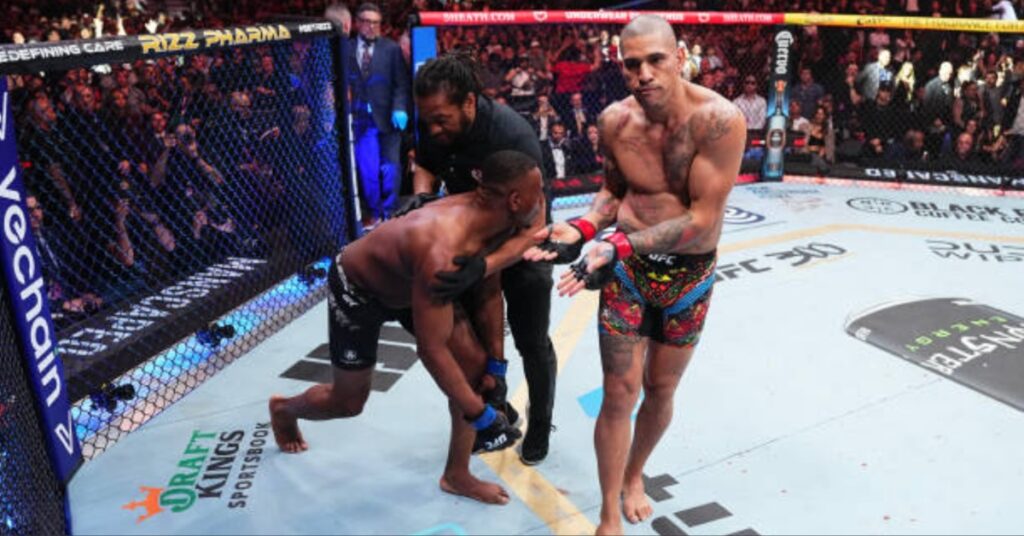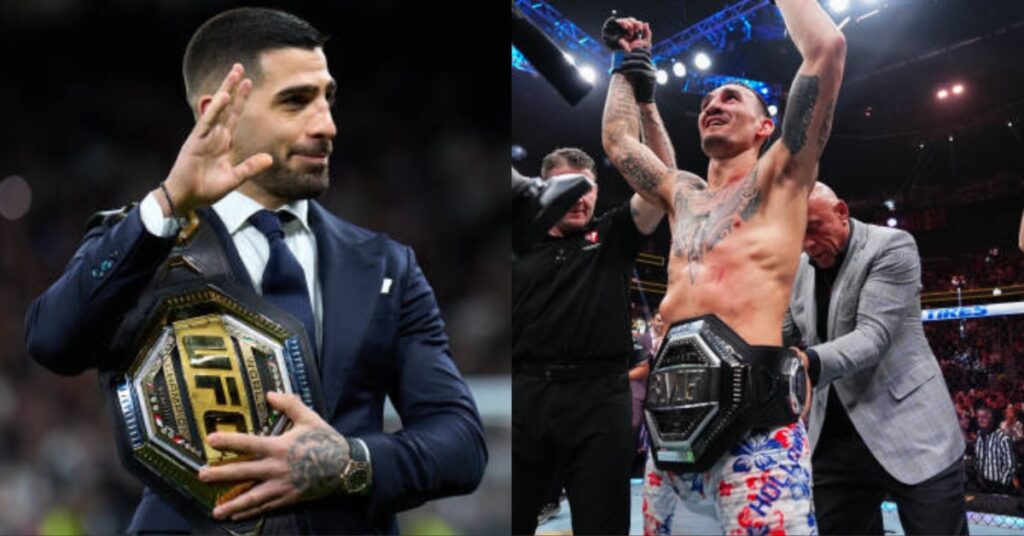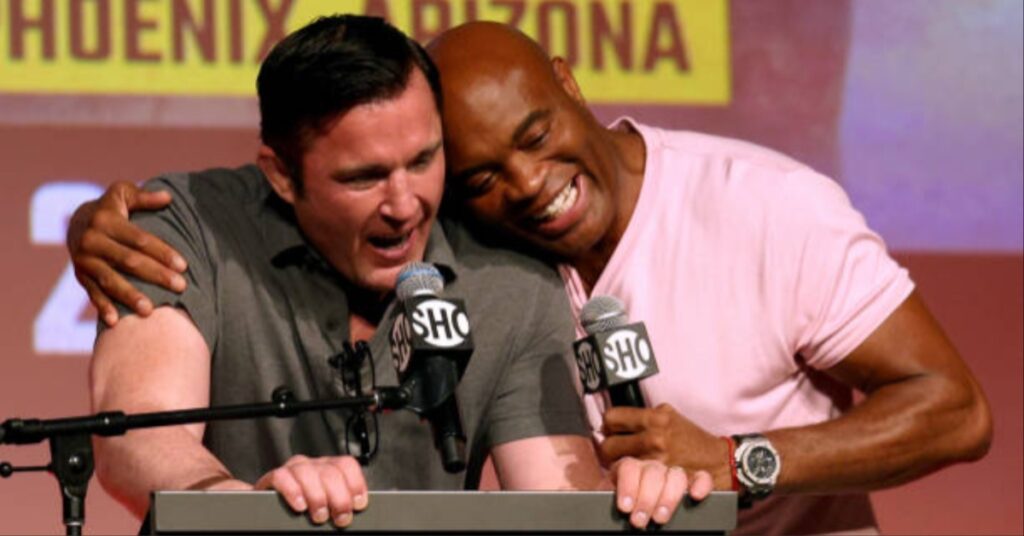Shamil Zavurov: The Rising Star of Russia
A Welterweight Fedor.
The hope and desire that must be felt by M-1 Global personnel and fight fans in the former Eastern Bloc alike. There is an undeniable void, with the Last Emperor’s longstanding reign brought to an end, of a dominant Russian champion tearing a hole through his division with the verve and cold tenacity that only a warrior from the steppes has imbued in his heart and soul. It is in part, forlorn longing, and part excitement at the prospect of new blood cutting a swathe across the sport and bringing more glory on his motherland, his promotion and his team. It is the hope that Shamil Zavurov will become a welterweight monster in the sport, the man simply nicknamed “champion”.
The austere simplicity of the nickname is indicative of both the man and the country. A namesake of the great Emelianenko, the poet Fyodor Tyutchev, famously remarked that ‘Russia… cannot be understood with the mind’. Real talk. This is a country that suffered thirty million war casualties in the Axis Powers invasion, and still won. This country is where Le Grande Armée of Napoleon Bonaparte came unstuck in the steppes, and was rebuffed on the Road to Moscow. This country dominates the world map; it’s huge, bloated presence stretching from the borders of Easter Europe and Poland, Finland, Belarus and Ukraine, right across the Middle East and to the very furthest eastern stretches of the globe, sitting north of China, North Korea and Japan. Its size alone boggles the mind, let alone the amazing disparity of climes and environments within its borders. From the frozen steppes, to the sub-tropical forests around Sochi of the south, to the perilous, artic hell that is northeastern Siberia. And its recent history! Tsarist backwardness, revolution, communism, perestroika…
Russia is a country that breeds tough men.
Zavurov is no different. He displays that very attribute in the ring, with his combination of strikes and throws, positional grappling and balance. He maintains composure, and unleashes his skill via controlled aggression. It is a sight we’ve seen before from fighters of Russia, but no less impressive for it.
The austere nickname befits Zavurov the man too. He is of the Rus tribe – the trademark thousand-yard-stare in place, through dark, unwavering eyes. The comparison with Fedor is not a frivolous one to make either – beyond the obvious fighting style and shared nationality, there are other legitimate synergies between the two athletes.
Zavurov, like his famous compatriot, competes simultaneously in Mixed Martial Arts and Sambo. Like Fedor, he is successful in both. He has a half-century of victories in Combat Sambo, and a current total of three world titles in the sport. He made his professional Mixed Martial arts debut in 2004 in Ukraine, aged only 19, and prefaced the rest of his career with nearly a half-century of victories in amateur rules MMA to boot. He has five knockout wins, four by submission and five decisions, showing a clear variation with his means of victory. Beyond stylistics and nationality, clearly statistically alone he was something of a wunderkind.
His current stat sheet reads at 14-1, in the professional ranks. Subsequent to his debut victory, he competed extensively in the amateurs, and – apparently somewhat tentatively – returned to the pros. He beat the (currently) 12-4 Mukahmed Ashuev in 2007, with a flurry of punches in the second round, and the following year won two fights, one by armbar and the other by decision. In 2009, his sole fight was a controversial loss to the 8-1 win/loss (as of 2011) Rashid Magomedov, and it was a split-decision that many within the European MMA scene feel was inaccurate. In this too he shares a synergic career pattern with Fedor Emelianenko – both men suffered a controversial, much belied “loss” in their fifth fight, and in Fedor’s case it would remain the only one on his record until the final fights of his career a decade later. Should Zavurov’s career follow a similar pattern, I’m sure neither he nor his management – nor for that matter, the watching world – could be forgiven for holding the welterweight aloft with Emelianenko as the shining lights of Russian sport.
It was Winston Churchill who once said, “A pessimist sees the difficulty in every opportunity; an optimist sees the opportunity in every difficulty.” That is certainly true. Churchill was the master at spurring people through dark times – he did so for an entire nation, as Great Britain and its Empire stood alone against Nazi Germany in 1940, with no support or allies against the tyrant armies sweeping across Europe. And it is this determination to come back from adversity and setback that perhaps was the catalyst for Zavurov’s surge to prominence in M-1 Global, as the vastly experienced young man who fought professionally less than once a year on average for the first six years of his MMA career suddenly went on a tear through Europe’s welterweight division, ultimately capturing and defending the M-1 Challenge World Welterweight championship and defending it, for what currently stands at a 14-1 slate.
The split decision loss was the M-1 Global debut for ‘Champion’. It was his first fight in St Petersburg, the long time capital of Russia in the days before communism and still the second largest and second most important city in the world’s largest country. An M-1 Global card in St Petersburg is a big deal for a Russian fighter, and the young man acquitted himself well, only to lose a controversial decision. But in Churchillian terms, the fight only kick-started his career on a bigger stage than on the Ukrainian regionals; after a solid win in Omsk, he was back in Vadim Finkelstein’s organisation only two months later, competing against Radik Iboyan on M-1 Selection 2010: Eastern Europe round 2, in the second of what would be NINE fights that Zavurov had in 2010 alone. Talk about Dana and the UFC guys, “the best fight the best three times a year”. Bah humbug. Zavurov fought nine times in 2010, four times for M-1 Global, and twice against solid competition on Moscow shows and once in Prague.
That is a fighter.
The combined win/loss records of all his opponents he faced in his perfect 9-0-0 streak in 2010 was 75-58. A mixed bag, but one positively filled with ring time. He was facing European fighters of experience, the kind of men designed and if not custom made, then at least custom booked for fights against young fighters for the prospects to sharpen their tools, hone their trade and gain experience at the expense of. And he not only “got rounds in” and handled them all, he scored five finishes, three in the first round and one in the second. In all those nine fights, only two resembled even contests. And worse for potential opponents is that Shamil ‘Champion’ Zavurov is only getting better.
The sambo-striker hybrid that such men as Sergei Kharitonov, Aleksander Emelianenko and obviously Fedor have displayed is evident for several characteristics. One can see watching Zavurov, the sweeping casting punch or left hook followed by laser guided right cross, and with the distance closed, a double underhook or clinch that inevitably leads to the throw. It was most famously utilised against Antonio Rodrigo Nogueira in Pride during his first fight against Fedor, and it is one that all Sambo practitioners and Judokas seem to use in Mixed Martial Arts. One thing that separates Zavurov though, is the use of other strikes. Fedor famously trained hard with Ernesto Hoost and Tyrone Spong before facing a K-1 calibre striker in Mirko Filipovic, and it showed with his leg checks, blocks and general use of kicks that he had rarely used before, even attempting a head kick on the Croat. Shamil though, finds kicking as natural as an uchi-mata; he is also a champion in Wushu Sanda, or Sanshou, the Chinese martial art (Kung Fu has many different styles, and the term can also apply to all Chinese martial arts, as can the term ‘wushu’. But lets not go there…). Zavurov has competed in San Shou tournaments against internationally ranked competition, and won. He also boasts a pedigree in wrestling. Simply put, he has an extensive background in various martial arts, a highly respectable pedigree in multiple combat sports, and is equally confident striking and grappling. He has the perfect formula for success in the modern era of Mixed Martial Arts. He has more ways to beat most welterweights than they have to beat him.
The fight against Abner Lloveras shows how far the Russian has come since his loss, only just over one year and eleven fights ago. After his winning streak, he got the shot at the inaugural M-1 Global Welterweight championship, at M-1 Challenge XXII, and he did not disappoint. Early in the fight, he clinched with the grappler Lloveras after closing the distance with punches, and worked for position. He managed to reverse his taller and bigger opponent, and showed balance to use a Judo throw of his own. At the point of impact, he kept his balance, and took Lloveras’ back, then rolled him and landed some ground and pound, despite his own leg being trapped in the half guard. Showing great balance, he kept an aggressive position for the next five minutes, passing guard against a very defensively capable opponent, and avoiding with ease all the submission attempts the Brazilian Jiu Jitsu practitioner attempted against him.
Round 2 brought more of the same. Tagging him on the feet, the shorter, stockier Zavurov again imposed his will, securing a north to south and landed ground and pound while maintaining pure balance and great positioning. He nearly finished him with an audacious rear-naked… or side-naked-choke, with no hooks locked in. Lloveras survived the round.
Round three brought more grappling dominance, and round four the same after that. By now though, the staunch resistance was wearing off, and Lloveras’ reactions and defence were slipping. The visibly weakened Abner shipped some heavy blows late in the round, and Zavurov secured a dominant position and whaled away before the official was forced to act. The mercy call brought the man with titles and championships in San Shou and Sambo, Shamil Zavurov, a world title in a third combat sport, this one the most impressive of all – the M-1 Global World Welterweight Championship.
Of course, he is hardly undisputed champion. With the current state of play, ‘world M-1 champion’ may equate to European champion. But what does not matter are titles, sanctioning bodies and promotions. What matters are fighters. And Shamil Zavurov, a welterweight champion, is a force to be reckoned with in the 77kg (or 170lb) division. He brings a formidable package and skillset to the ring.
They say the mark of a real champion is not winning a title, but defending it. Of course, there are exceptions to this rule, when it would be ridiculous to assert a fighter who’d achieved the culmination of his life’s work by winning a belt, and then either retired or lost immediately after, was not a ‘real champion’, but by and large, it is accepted that – especially with prospects and/or younger fighters, the champion must prove his worth by defending his belt. And this was the task that faced the still young Zavurov, at M-1 Challenge: Grishin vs. Guram, a card on which it could be construed he was in the shadow of the undefeated monster Guram Gugenishvili. And while Guram did indeed produce the goods that are swiftly making him one of Europe’s foremost prospects and one of the rising stars of the heavyweight division, Shamil ‘Champion’ Zavurov definitely lived up to his name and put on his own championship worthy display.
He was matched up against Tom Gallicchio, an American fighter from New Jersey. Gallicchio, with nine of fifteen wins coming via submission, posed an interesting question for the man with both striking and grappling pedigrees; fight pragmatically, be practical and outstrike the submission magician, either technically picking him apart of outright mauling and brawling to overwhelm the grappler, or take him on in his own realm. Enter the lions den, compete against a fighter in THEIR comfort zone and let the chips fall as they may. And while not always wise, it is most definitely the ballsy option, and a surefire way to impress the onlooking aficionados of the sport. And of the two options, the latter is just what he did.
The majority of round one was spent on the ground. Shamil maintained top position, attempting ground and pound from within the guard of the East Coast American, and stifling any attempts at trapping his limbs or scrambling. Considering that it was the first defence of his first major title in the sport, it speaks volumes about the man that he took the fight to where his opponent was strongest. It shows a real force and confidence within him.
Round two, however, was a different story.
The American and the Russian circled each other, eying each other warily. They looked like the chess players who competed against each other at the height of the Cold War, with Soviet and American secret agents in the crowd trying their best to make a game of chess look important in the grand scheme of things in world politics. Then all of a sudden, Gallicchio changed the direction he was circling in, and stepped to his own right. BOOM. With a right hand Dan Henderson would have been proud of, Shamil dropped him hard, and duly pounced for the ground and pound finish. The American showed considerable durability, and tried grabbing for an ankle in relatively composed desperation, but Shamil shrugged it off, and mercilessly went for the kill. The referee’s intervention notched the first official title defence in M-1 Global for Shamil Zavurov, whose welterweight title belt was shortly after placed around his waist by president Vadim Finkelstein.
So where now from here? There are a plethora of fantastic welterweights that could be lined up for Zavurov. England’s own Paul Daley and Dan Hardy got snapped up by the UFC, but Daley’s discretions led to his exit from the org, and while he is contracted to BAMMA and Strikeforce, given that he is on non-exclusive deals and that Zuffa now own Strikeforce, approaches could be made. Daley’s kryptonite has always been adept grapplers; Satoru Kitaoka proved that back in Pancrase long before getting outwrestled in the UFC. Provided Shamil was smart enough to stick to a non-suicidal gameplan that involved no attempt to stand with the Mike’s Gym fighter, then it would be a highly winnable fight. THE classic, quintessential striker versus grappler bout that so characterises Mixed Martial Arts.
Beyond that, one welterweight who somehow slipped through the net when the UFC poached Hardy and Daley; ‘Judo’ Jimmy Wallhead. The Judoka was, like the former two, highly respected on the world scene and one of Europe’s foremost 77kg professionals. Yet Zuffa did not snatch him up. Should the opportunity arise, that would be a true fight for European dominance.
Beyond that, the best of Eastern Europe and the rest of the continent may not pose much of a threat to Shamil in his current form. His next fight – only a month after his last against Gallicchio – will be on April 28th, headlining the twenty-fifth M-1 Challenge card. And it will be a rematch against non other than Rashid Magomedov, the man who escaped their fight with a much decried ‘victory’ courtesy of the judges scorecards.
It tells a story. Much like when Pride booked a rematch between their Heavyweight champion Fedor Emelianenko, and the by-then unranked Tsuyoshi Kohsaka, who had cut Fedor with an illegal elbow and, given the tournament format of the fight, had been allowed by the promoters to escape with a highly unjust ‘win’ on paper, which was the only loss of Fedor’s career from beginning to end. Of course, Fedor destroyed him. And much like that, Finkelstein and the M-1 Global promotion have booked their welterweight champion in a match-up with the one man who beat him in controversial manner. So the question is, will history repeat itself?
Even if Shamil does not win, it is smart booking by M-1. Magomedov for his part boasts an 8-1 win/loss record, and should he prove good enough to repeat his feat and emerge victorious against one of Europe’s rising stars, then M-1 will have another worthy star in his own right as their champion. It is quality booking, and they cant lose either way.
Different media outlets rank the Russian Zavurov at various points of advancement and status. I spoke to one member of a fairly large Mixed Martial Arts outlet, and he confided in me that he felt Shamil was as high as top 25 already. Others disagree, and Fight Matrix did not include him in their latest Top 50 rankings. Still though, one has to feel it will only take another year like 2010, or a handful of fights against opposition with a name in America, and pretty soon the MMA world will be taking notice of yet another cold-eyed Russian with a tremendous pedigree in various martial arts, sharp striking, formidable grappling, and world titles in Sambo and San Shou to prove it. Now with an M-1 title in Mixed Martial Arts, let us see how far he can progress his career in this sport. As it is, the future looks bright indeed for the man known as ‘Champion’.


